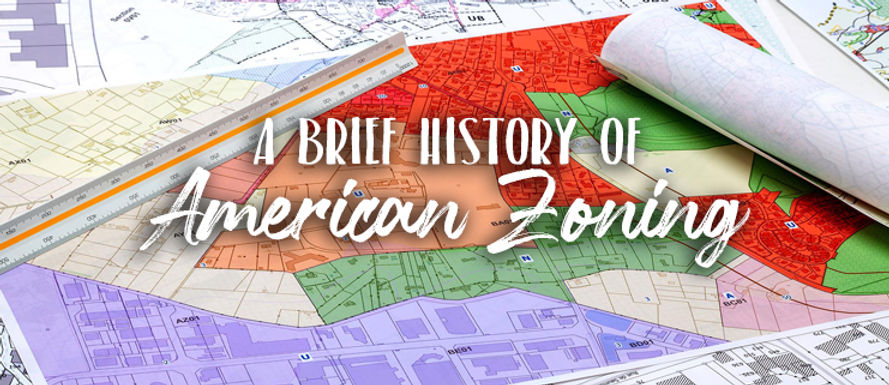
The Past
New York City was the first to adopt a comprehensive zoning ordinance in 1916. It was primarily directed at limiting the width and bulk of skyscrapers and establishing several zoning districts to allow for, or prohibit, certain uses. Other municipalities were quick to follow suit. Without the benefit of enabling statutes that granted states and municipalities proper authority, however, lawsuits challenged the legitimacy of zoning laws.
Perhaps in response to a growing level of scrutiny as to the constitutionality of zoning, in 1924, the U.S. Department of Commerce published the Standardized State Zoning Enabling Act (SZEA). The Enabling Act included the following sections: grant of power, a provision that the legislative body could divide the local government’s territory into districts, a statement of purpose for the zoning regulations, and procedures for establishing and amending those regulations. In 1928, the Commerce Department published a supplemental model title A Standard City Planning Enabling Act (SCPEA). Among other things, the SCPEA discussed the organization and power of the planning commission, the need for a comprehensive plan to govern the physical development and the public improvements of a municipality, and the control of subdividing land. Therefore, the SZEA and SCPEA are credited with laying the foundation for America’s zoning laws.
Today’s Zoning
Although the federal government played a pivotal role in creating the regulatory system, Washington has very little authority to reform today’s zoning. The SZEA and SCPEA provided the power and framework for state enabling acts that then granted municipalities the authority to establish their own zoning laws. The result is that zoning laws vary from one municipality to another.
Standard zoning, often referred to as “conventional” zoning, is often criticized as being inflexible and political. Many believe that it promotes urban sprawl by the creation of low-density suburban neighborhoods rather than allowing for the creative use of space. As development spreads further away from the city center, zoning regulations almost always dictate that whatever land use was first in a specific location takes precedence. So agricultural land gives rise to low-density single-family neighborhoods. Given time, roof tops necessitate the demand for retail services such as grocery stores, laundry cleaners, and restaurants. As each tract of land is developed, conventional zoning stipulates that it be delegated for one use. Housing goes here, and commercial there. Once community stakeholders have a vested interest in keeping certain uses out, like manufactured housing or apartments, the die is cast. The process repeats itself as growth spreads from one area to the next. Many argue that a new way of thinking about zoning in America is needed.
The Future
So what could regulatory reform look like for zoning in the United States? Some reform proponents believe it should start at the top; scrap the one-size-fits-all approach perpetuated by the SZEA in favor of creativity at the state and local level. For example, in 2019, Oregon become the first state in the nation to ban local governments from prohibiting duplexes, triplexes, and fourplexes within single-family zoning districts. Stated another way, Oregon municipalities must allow for higher density residential uses on land previously reserved for single family homes.
Others argue the purpose of regulatory oversight should be narrowed. So while conventional zoning districts delineate a property’s intended use, the added regulatory burdens that stipulate lot size, minimum floor area requirements, and building material requirements are viewed as overreaching.
The process to determine a regulatory framework for zoning that treats people and their property fairly, and that provides flexibility for an ever-changing landscape is easier said than done. However, as we near the 100th anniversary of the SZEA, there’s growing optimism that regulatory overhaul could usher in creative solutions for the future.

